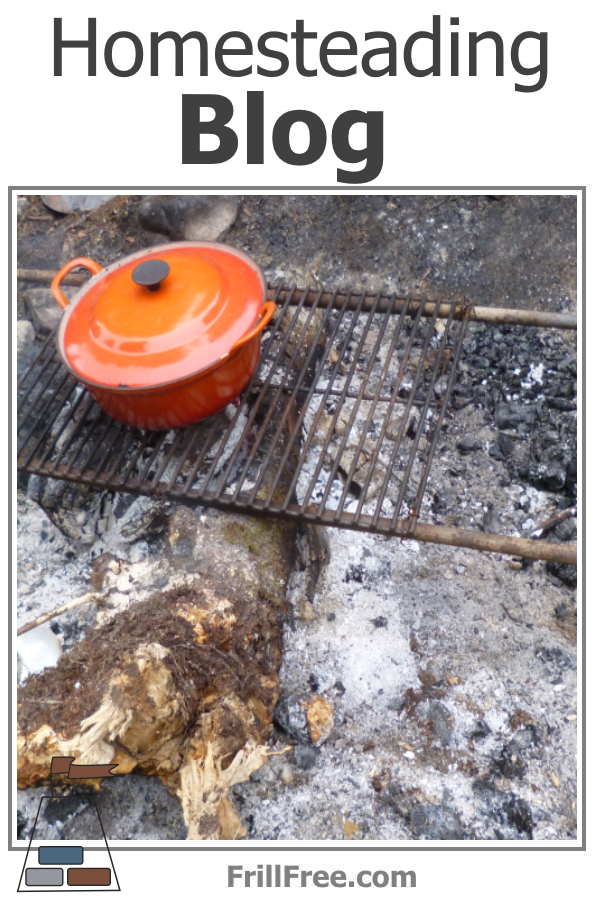| Back to Back Issues Page |
 |
|
Frill Free Zone Newsletter Q&A March 15, 2022 |
Spring is on the way, even though it's not here yet, where I am. Plans for when it gets here are underway. March 15 2022One question that crops up a lot (see what I did there?) is how to fence off the vegetable garden, to protect the plants from being raided by critters. Living in the bush, like I do, it's easy to find branches and twigs to make fences. I particularly like willow, and other twigs like clump maple (Acer douglassii) and saskatoon (Amelanchier alnifolia) are good candidates for fencing. Hazel (Corylus avellana) has been used for centuries in the UK for hurdles (which are movable panels), and if it grows in your neighborhood, make sure you use some. All of these shrubs are easy to coppice, which is when you cut them back to the ground to force them to make many new shoots right from the base. This is a great technique to get fencing material that's long and straight. The weaving part of the fence is where the fun begins. There are lots of ways to make a fence critter proof, starting with using an existing fence such as page wire or construction type fencing, interlaced with the twigs as a decorative effect. Other methods include making a living fence, which is just like a hedge only more tightly woven so animals struggle to get through it. I like using a simple wire strand fence, then wiring twigs onto it in a criss cross pattern, or a palisade design. A strip of stucco wire or chicken wire at the bottom (even buried a foot or so to prevent digging) will keep out most vermin. You can use metal posts, such as t-posts, which can be inserted into fairly soft and non-rocky ground to string a fence between. Or, if you prefer not to have metal posts, cut round hollow) metal pipes into two foot (60cm) lengths, bang those half way into the ground, and put a branch into it. This protects the branch from rotting, which will happen anyway, but with this method it will take longer. A similar method is to pour small concrete foundations, using a coffee can, small bucket or plant pot as the mold. Insert a large nail upright in the center as it dries. Then, with a corresponding hole drilled into the branch you can make a fairly sturdy fence with several of these in a row. Larger ones for the corner posts and gate posts will make it even more secure. Resist the temptation to use treated posts. These have all kinds of chemicals soaked into them, which will leach out - right into your garden. If you would like me to answer your questions, reply to this email,use the contact form, or fill out the survey on the bottom of every page of the website. Visit the Homesteading Blog for all new and updated pages. 

|
| Back to Back Issues Page |